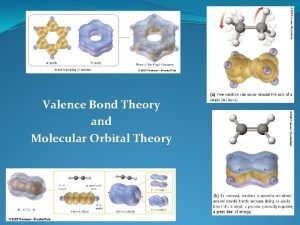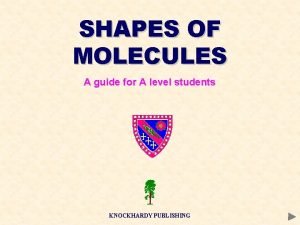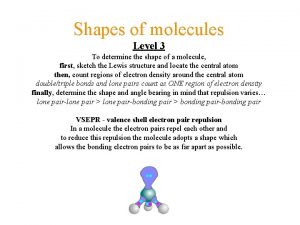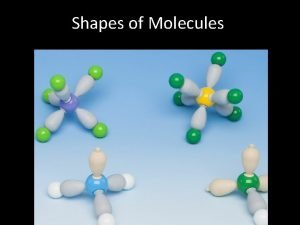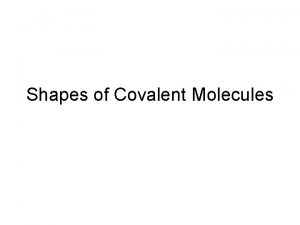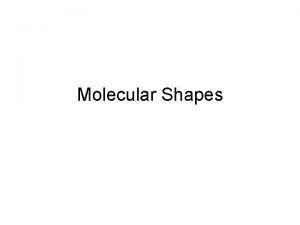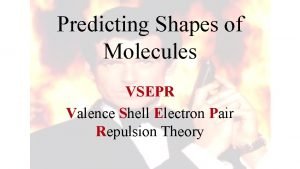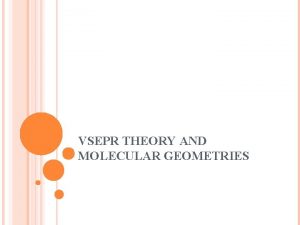Shapes of Molecules VSEPR VSEPR stands for Valence






- Slides: 6

Shapes of Molecules

VSEPR • VSEPR stands for Valence Shell Electron Pair Repulsion. • Since electrons all have a negative charge, they repel each other. • Knowing that electrons will pair up to make bonds, it means that the bonds will repel each other as much as possible. • Electrons also make non-bonding pairs or lonepairs when there are more than 4 electrons around the central atom.

Lewis-Dot structures • Remember that electrons first spread out and go one on each of the four sides of the central atom, but when there are more than 4 they have no choice but to pair up. • Lewis-Dot structures are limited to two dimensions, but atoms and molecules are of course three dimensional. • Instead of 90 degrees being the optimum angle for the electrons to be farthest from each other in two dimensions, it is actually 109. 5 degrees in 3 dimensions.

Shapes • To get a view of all the shapes and how many bonding pairs there are go to the following link: intro. chem. okstate. edu • Double bonds reduce the number of bonding directions that a central atom can have. • For instance, a carbon atom with one double bond will act as if it can only have three bond groups and be trigonal planer instead of tetrehedral. • A triple bond would reduce the number of bond groups by two.

Carbon • Carbon only has 4 valence electrons. 2 in the sorbital, and one in each of two p-orbitals with one p-orbital empty. • We know that carbon can make bonds in 4 different directions with four unpaired electrons. • This is because carbon transfers one of the selectrons to the empty p-orbital. • This is now called a hybridized orbital. • So for carbon, we call it sp 3 hybridization.

Bond angles • If a central atom makes four bonds, the angle between each bond is 109. 5 o. • Non-bonding paired electrons repel other electrons and bonds more than other bonds do, which squeezes the other bonds closer together. • In NH 3, the central nitrogen has a non-bonding pair which sqeezes the other bonds to a 107 o angle. • In water, the oxygen has two non-bonding pairs which force the hydrogens at a 104. 5 o angle.


